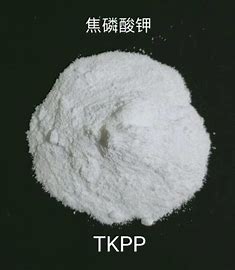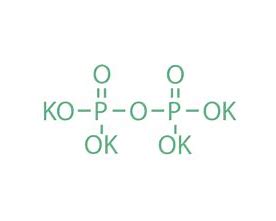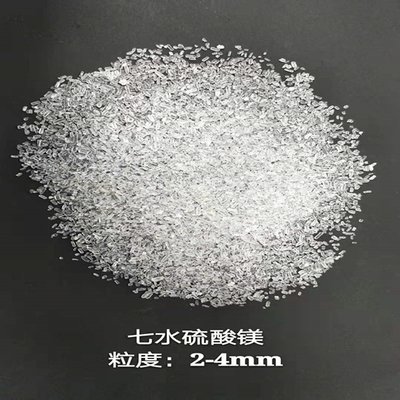Sulfuric Acid/7664-93-9/H2SO4
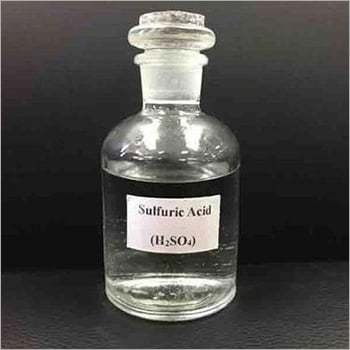
I. Overview of Basic Information of Sulfuric Acid
Sulfuric acid, as a crucial inorganic compound with the chemical formula H₂SO₄, is the most important oxygen-containing acid of sulfur. The pure substance is a colorless oily liquid that crystallizes at 10.36°C. In daily use, sulfuric acid aqueous solutions of different concentrations are commonly used. It has a boiling point of 338°C and a relative density of 1.84. Sulfuric acid is a strong acid that can react with the vast majority of metals. In high concentrations, it has strong water absorption and can be used as a dehydrating agent. It also has corrosiveness and oxidizing properties, so it requires extra caution during use.
| Item | Details |
|---|---|
| Chinese Name | Sulfuric Acid |
| English Name | Sulfuric acid |
| Chemical Formula | H₂SO₄ |
| Molecular Weight | 98.1 |
| CAS Registry Number | 7664-93-9 |
| EINECS Registry Number | 231-639-5 |
| Melting Point | 10 – 10.49°C |
| Boiling Point | 338°C |
| Water Solubility | Miscible with water in any proportion |
| Density | 1.8305 g/cm³ |
| Appearance | Transparent, colorless, and odorless liquid |
| Application Fields | Industrial production, agriculture, daily household, etc. |
| Safety Description | S26; S30; S45 |
| Hazard Symbol | C |
| Hazard Description | R35 |
| UN Dangerous Goods Number | 1830 |
| Control Information | It is a precursor for 制毒 – 3 |
II. The Historical Development of Sulfuric Acid
(I) Exploration in Ancient China
In the late Eastern Han Dynasty in China, the alchemist Hu Gangzi created the “earthen chamber method” to produce sulfuric acid by distilling copper sulfate pentahydrate (CuSO₄·5H₂O). The process was recorded in “The Record of Extracting Gold from Ores”. In the Tang Dynasty, “The Formula of the Nine Tripod Divine Elixir” included this method. The chemical reactions are as follows:
CuSO₄·5H₂O→CuO+SO₃+5H₂O
SO₃+5H₂O→H₂SO₄
However, this method was not widely promoted.
(II) Industrial Evolution in the West
- Origin of the Earthen Chamber Method: In the 8th century, the Arab alchemist Jabir ibn Hayyan obtained “vitriol essence” (sulfuric acid) by dry distillation of green vitriol (FeSO₄·7H₂O). In the 10th century, the Persian alchemist al-Rhazes, and in the 13th century, the German alchemist Albertus Magnus also produced sulfuric acid through similar methods. At that time, sulfuric acid was called “oil of vitriol” or “north house acid”.
- Innovation of the Nitration Method: The Dutch chemist Drebbel created the nitration method to produce sulfuric acid by burning a mixture of sulfur and saltpeter. The German chemist Glauber heated a mixture of sulfur and potassium nitrate vapor to produce sulfuric acid. The British quack doctor Ward improved this method to produce Glauber’s salt, but the process principle was kept secret and was only made public after his death.
- Maturity of the Lead Chamber Method: In 1746, British doctors Roebuck and Garbett created the lead chamber method, which was an improvement of the nitration method. They built factories in Scotland for large-scale production. Later, Foley, Clement, Desormes, Gay-Lussac, and Glover continuously improved the process to achieve the recycling of nitrogen oxides.
- Rise of the Tower Method: The tower method, which emerged in the second half of the 19th century, has a similar preparation principle to the lead chamber method. The tower structure has some improvements, but it also has disadvantages such as complex equipment.
- Mainstream of the Contact Method: In 1831, Phillips proposed using platinum powder to catalyze the production of sulfuric acid from sulfur dioxide, but platinum is prone to failure. In 1875, Messel, Winkler, and others conducted related experiments. In 1913, the German company BASF invented vanadium catalysts, making the contact method the mainstream production method.
III. The Existence and Distribution of Sulfuric Acid
(I) Sulfuric Acid in the Earth’s Environment
Sulfur dioxide in acid rain reacts with water to form sulfurous acid, which is then oxidized to sulfuric acid, affecting the acidity of the soil. The oxidation of sulfur-containing minerals in nature can also form sulfuric acid. Some sea slugs can spray sulfuric acid-containing secretions for defense.
(II) Sulfuric Acid on Other Planets
In the upper atmosphere of Venus, photochemical reactions of sulfur dioxide, carbon dioxide, and water under the action of the sun form sulfuric acid clouds. Sulfuric acid undergoes a continuous cycle of formation and decomposition. There is a possibility of sulfuric acid on Europa, a moon of Jupiter, but the details are still controversial.
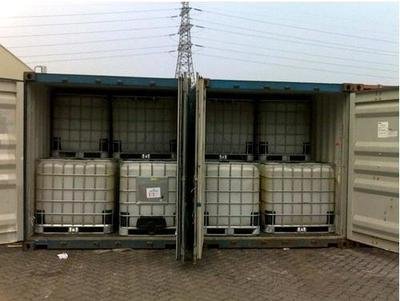
IV. Molecular and Chemical Properties of Sulfuric Acid
(I) Molecular Structure Data
| Item | Value |
|---|---|
| Molar Refractive Index | 13.92 |
| Molar Volume (cm³/mol) | 44.5 |
| Isotactic Specific Volume (90.2K) | 148.8 |
| Surface Tension (dyne/cm) | 124.1 |
| Polarizability (10⁻²⁴cm³) | 5.52 |
(II) Computational Chemical Data
| Item | Value |
|---|---|
| Reference Value of Hydrophobic Parameter Calculation (XlogP) | -1.4 |
| Number of Hydrogen Bond Donors | 2 |
| Number of Hydrogen Bond Acceptors | 4 |
| Number of Rotatable Chemical Bonds | 0 |
| Number of Tautomers | None |
| Topological Molecular Polar Surface Area (TPSA) | 83 |
| Number of Heavy Atoms | 5 |
| Surface Charge | 0 |
| Complexity | 81.3 |
| Number of Isotope Atoms | 0 |
| Number of Determined Atomic Stereocenters | 0 |
| Number of Undetermined Atomic Stereocenters | 0 |
(III) Details of Physical Properties
Pure sulfuric acid is a colorless, transparent, and odorless oily liquid. Sulfuric acid of different concentrations has different characteristics and uses. The common concentration levels are as follows:
| H₂SO₄ Proportion | Corresponding Density (kg/L) | Concentration (mol/L) | Common Name |
|---|---|---|---|
| 10% | 1.07 | ~1 | Dilute Sulfuric Acid |
| 29 – 32% | 1.25 – 1.28 | 4.2 – 5 | Lead-Acid Battery Acid |
| 62 – 70% | 1.52 – 1.60 | 9.6 – 11.5 | Chamber Acid, Fertilizer Acid |
| 98% | 1.83 | ~18 | Concentrated Sulfuric Acid |
(IV) Performance of Chemical Properties
- Properties of Concentrated Sulfuric Acid
- Dehydration Property: It can remove hydrogen and oxygen elements from organic substances according to the composition ratio of water, causing substances like sucrose to carbonize. For example, the reaction between sucrose and concentrated sulfuric acid produces black carbon, releases heat, and generates irritating gases.
- Strong Oxidizing Property: It can react with metals (such as passivating iron and aluminum at room temperature, and reacting with metals like gold and platinum when heated), non-metals (such as carbon, sulfur, and phosphorus), and other reducing substances (such as hydrogen sulfide, hydrogen bromide, and hydrogen iodide).
- Properties of Dilute Sulfuric Acid: It can react with most metals, metal oxides, some salts, and alkalis. It can react with metals preceding hydrogen to produce hydrogen. When heated, it can catalyze the hydrolysis of proteins, disaccharides, and polysaccharides. It can turn purple litmus 试液 red.
V. Production Processes of Sulfuric Acid
(I) Contact Method
It is the mainstream industrial production method, divided into three stages: roasting pyrite or sulfur to produce SO₂; oxidizing SO₂ to SO₃ under the catalysis of V₂O₅; absorbing SO₃ with 98.3% concentrated H₂SO₄ to obtain fuming sulfuric acid, and adjusting to obtain 98% product.
(II) Other Methods
- Blowing Method: Passing clean air into industrial sulfuric acid to blow out sulfur dioxide, which is used in the production of battery sulfuric acid.
- Distillation Method: Heating and evaporating industrial sulfuric acid, condensing the sulfuric acid vapor to obtain the finished product. There are processes in foreign countries to prepare high-quality sulfuric acid by reacting sulfur trioxide with distilled water.
- Rectification Method: Used for the separation and purification of substances in the production of electronic-grade sulfuric acid. Based on the volatility differences of components in liquid mixtures, it is limited by equipment and heating methods and is suitable for small-scale production.
- Gas Absorption Method: Used in the production of electronic-grade sulfuric acid to remove impurity gases such as SO₂ and NOₓ. It includes processes such as SO₂ purification, SO₂ absorption, precise filtration of sulfuric acid, and tail gas treatment.
(III) Concentration Technology of Dilute Sulfuric Acid
- Traditional Method: Heating dilute sulfuric acid to evaporate water and increase the concentration of sulfuric acid.
- New Schemes: Using the waste heat of the exhaust gas from the rotary kiln calcination for pre-concentration; adopting the impinging stream technology; the two-stage concentration method; the vacuum concentration technology of dilute sulfuric acid, etc.
VI. Methods for Determining the Concentration of Sulfuric Acid
| Determination Method | Principle | Steps |
|---|---|---|
| Acid-Base Titration Method | Based on the neutralization reaction between sulfuric acid and alkali | Standardize acids and alkalis with equilibrium solutions, titrate sulfuric acid with strong alkali, and calculate the concentration according to the titration amount |
| Ion Selective Electrode Method | Based on the potential change between sulfuric acid ions and specific ion-selective electrodes | Prepare standard solutions, place the electrodes in the test solution to measure the potential, and determine the concentration by comparison |
| Spectrophotometric Method | Based on the light absorption characteristics of substances at specific wavelengths | Prepare standard solutions, select specific wavelengths with a spectrophotometer, measure the absorbance of the test sulfuric acid solution, and calculate the concentration by comparison |
| Conductivity Measurement Method | Based on the relationship between the concentration of electrolytes in the solution and conductivity | Prepare standard solutions, measure the conductivity of the test sulfuric acid solution with a conductometer, and calculate the concentration by comparison |
| Gravimetric Method | Calculating the concentration by measuring the mass difference before and after adding sulfuric acid | Add a certain amount of sulfuric acid to a beaker of known volume, weigh the mass difference, and calculate the concentration |
| Specific Gravity Method | Calculating the concentration by measuring the density of the sulfuric acid solution | Use an instrument such as a densitometer or a specific gravity bottle to measure the density, and calculate the concentration according to the density |
| Conductivity Method | Calculating the concentration by measuring the conductivity of the sulfuric acid solution | Measure the conductivity of the sulfuric acid solution with a conductometer. The higher the conductivity, the greater the concentration |
VII. The Wide Application Fields of Sulfuric Acid
(I) Industrial Applications
As the “mother of the chemical industry”, it is used in the manufacture of fertilizers, drugs, explosives, pigments, detergents, batteries, etc. It is also essential in industries such as petroleum purification, metal smelting, and dye production.
(II) Agricultural Applications
When improving acidic soil, the impact of sulfuric acid needs to be considered. Sulfuric acid is also used in the production of some pesticides and fertilizers.
(III) Daily Household Applications
In some special cleaning scenarios, dilute sulfuric acid may be used for cleaning, but careful operation is required.
VIII. Hazards and Safety Precautions of Sulfuric Acid
(I) Hazard Information
- Hazardous Information: It is corrosive (symbol C) and poses serious risks (hazard description R35).
- Health Hazards: Contact can cause skin burns and respiratory tract damage. Ingestion can severely damage the digestive tract.
- Environmental Hazards: Sulfuric acid is related to environmental problems such as acid rain, which can damage the soil and water ecosystem.
- Risks in Laboratories and Industries: Improper operation in laboratories can easily cause accidents. Leaks during industrial production can cause serious pollution and safety threats.

